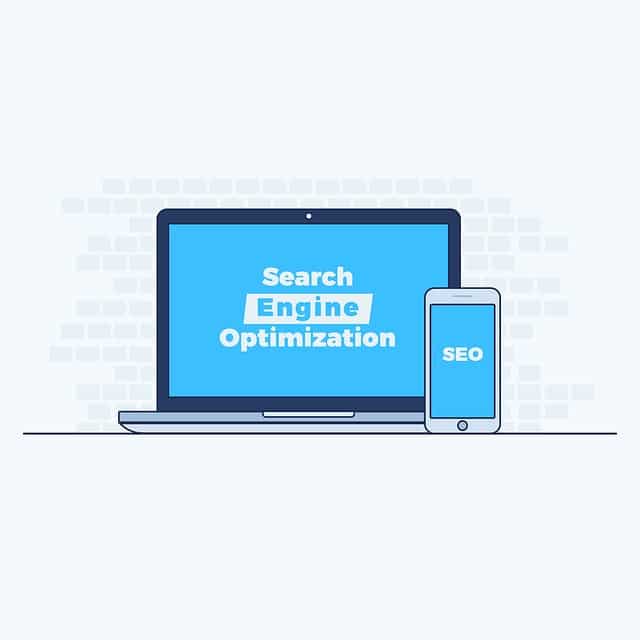-
Oct 17 2019 Important Elements Of A Good Brand Logo
Your brand’s logo is directly linked to your business’ identity – it’s the first visual impression you offer consumers, stakeholders, journalists and more. Logos can evoke powerful emotions, and, when designed right, they can communicate a brand’s true essence. Besides starting out by understanding your target audience’s preferences, how do you really pack so much into one small image? Well, here are seven elements of a great brand logo –
1. Timeless

Trends change with every passing minute. Opt for a logo that is timeless so it doesn’t become obsolete after a few months or years because rebranding is an expensive and time-consuming process. Your logo should have a long shelf-life that’s classy. Dior, Coca-Cola, Jaguar, Target, Apple, Taco Bell, Adidas, Nike, 7-11, Puma, Swarovski and Starbucks are great examples of such logos that have stood the test of time.
2. Simple

Less is more, always. Don’t confuse your audience with too many elements in one tiny logo. In fact, even if you try to go overboard, the truth is half the detailing won’t even be visible on a tiny phone screen. Marie Kondo your logo design. It’ll be more memorable.
3. Adaptable
 As your brand scales up and your marketing campaigns spread across multiple channels, you’ll need a logo that can be adapted to your Website, brochures, t-shirts, billboards, social media infographics, video clips, business cards, pens, backdrops, standees and more. Your logo should look nice even if it is super large or super small, and should look decent in black-and-white color schemes as well as full color. Select colors and fonts accordingly.
As your brand scales up and your marketing campaigns spread across multiple channels, you’ll need a logo that can be adapted to your Website, brochures, t-shirts, billboards, social media infographics, video clips, business cards, pens, backdrops, standees and more. Your logo should look nice even if it is super large or super small, and should look decent in black-and-white color schemes as well as full color. Select colors and fonts accordingly.4. Unique

Your logo should be distinct – the last thing you’ll want is for consumers to mix up your logo with another brand’s logo that looks very similar. Do enough research to avoid this blunder!5. Typography & Colors

Typography and colors emit a lot of personality and carry certain connotations. Are you looking for font and colors that convey power or nostalgia or fun or feminine appeal or youthfulness? Are the font sizes you’re selecting going to be visible in a small size or from a distance? Are the colors aesthetic? Do they communicate the right values? Will they look good on different color background? Usually, experts recommend avoiding more than 3 colors in one logo. Also, more than 3 colors in a logo will increase production cost when printing. Follow this sound advice!6. Meaningful

Your brand’s logo should be linked to your brand – there should be an interconnected meaning, rather than a sense of disjointedness. Your logo represents your brand’s vision, so make sure they are in sync. Think of tag lines that you want to include with your logo, as well.7. Balanced
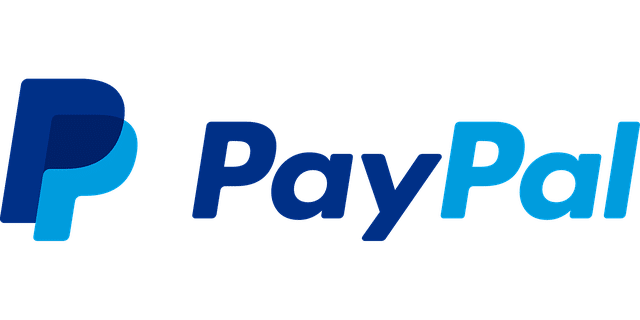
Whether your logo is only comprised of text or an icon or both, make sure all the elements are well-balanced and strong. Again, visual appeal is important – remember that. You may want to consider focus testing different logo options on a group of people to understand which one works best.We hope you’re able to develop a powerful logo for your business with this handy checklist. Remember to develop a comprehensive creative brief for your design team to avoid unnecessary back-and-forth and confusion. If you need any help with branding, don’t hesitate to contact our team right here.
Sources-
> www.logomaker.com/blog/2017/10/03/the-5-fundamental-branding-elements-of-logo-design/
> www.crowdspring.com/blog/create-a-successful-logo-with-these-10-essential-elements/
> https://blog.hubspot.com/insiders/logo-design-tips
> www.webdesignerdepot.com/2009/06/12-essential-rules-to-follow-when-designing-a-logo/ -
Oct 04 2019 6 Reasons Your Brand Should Send Newsletters
According to the Radicati Group, more than 34% individuals use email worldwide, with nearly 196 billion emails being sent on a daily basis, out of which 109 billion – the vast majority – are business emails. A 2013 study by Custora also indicates the popularity of email marketing – it quadrupled within four years preceding the study, accounting for nearly 7% of online customer acquisitions. Most importantly, statistics from Convince & Convert illustrate that 44% of email subscribers made at least 1 purchase linked to a promotional email they received, and are likely to spend 138% more than those who don’t receive newsletters. If you haven’t already integrated newsletters into your digital marketing strategy, here are six reasons why you really ought to begin! –
1. Update Busy Customers

People are extremely busy these days, and are likely to miss out on all of your updates. Newsletters are a great way to remind them of new company happenings, media coverage, endorsements and products/services, as well as promotional offers to boost sales. Your newsletter is basically a hall of fame of content within a predefined period / frequency interval.
2. Boost Sales

Newsletters, especially drip email campaigns, help lead customers to a particular end-goal, which can certainly be purchases. According to Experian, if you setup a transactional emailer, it is likely to receive an 8x higher open and click rate than other email campaigns. By snapshotting certain attractive offers like limited time discounts or delightful products that are hyperlinked to the sales page on your Website, newsletters are a great way to improve sales smartly.
3. Appealing ROI

According to VentureBeat and the Direct Marketing Association, email marketing generates nearly $40 per every dollar spent! This makes newsletters very inexpensive and a no-brainer for brands operating on a tight marketing budget. A joint study by Shop.org and Forrester Research indicates that 85% of US retailers consider email marketing as one of the most effective tactics to acquire customers.
4. Offer A Personal Touch

With many sophisticated tools out there in the market, newsletters can be personalized with not just the customer’s name, but even offers and information that meet their individual needs. Research from Campaign Monitor indicates segmented campaigns can increase revenue by a whopping 760% because it is more engaging.
5. Measurable Results

Rather than leaving things to guesswork, newsletters’ performance is measurable – you can see who has opened your email, how much time they spent, what links they clicked on and if they opted to unsubscribe. You can literally track which customers are more sales-ready than others, and which ones you need to spend more time and effort on.
6. Establish Trust

Newsletters help consumers and stakeholders trust you – it makes you seem as a thought leader within the industry, especially if you push out stats, research studies and trend-related blog posts from time-to-time, too, instead of only profiling new products and services. You can even highlight any events you’re participating in or awards you’re winning for an added credibility boost. Bottom-line is people like to do business with brands they can actually trust, so use newsletters to your advantage.
We hope these six reasons encourage you to incorporate email marketing into your brand’s strategy. If you need any help, don’t hesitate to contact our team of experts at Kissdoodles right here.
Sources-
> https://smallbusiness.chron.com/company-newsletter-important-68359.html
> https://smallbusiness.chron.com/importance-newsletters-business-61725.html
> https://www.saleswingsapp.com/email-marketing/why-you-should-send-out-newsletters/
> https://inboundrocket.co/blog/6-reasons-why-email-marketing-is-important-for-internet-marketing/ -
Sep 04 2019 Stay On Top Of Marketing Trends With These 10 Sites
Irrespective of what the nature of your business is, staying on top of digital marketing trends is essential because the landscape is changing with every passing day. From SEO tweaks and content hacks to social media trends and emailer optimization, there are plenty of facets to keep track of. We’ve compiled a handy list of 10 excellent blogs and Websites to follow that will keep you in the loop about all developments within digital marketing.
1. HubSpot Blog

With plenty of research studies, data analysis, insights, easy-to-process infographics and more, Hubspot’s blog is an excellent resource for all marketing professionals to uncover brand new information that can work wonders for their strategy.
2. Search Engine Land

The brand behind the Search Marketing Expo, also releases regular news surrounding important headlines, as well as in-depth analysis of trends.
3. Social Media Today

Social media presence is imperative in today’s day and age, and if you want to know the latest buzz surrounding Facebook, Twitter, Instagram, Snapchat and more, Social Media Today will keep you equipped with information ’round the clock.
4. Copyblogger

Solid content is the backbone of any digital marketing campaign, but even content writing has its own rules. Copyblogger will improve your knowledge regarding everything that has to do with copy, although it might not be as regularly updated as other portals on this list.
5. Neil Patel

Previously known as the KISSmetrics blog, New York Times best-selling author, Neil Patel shares in-depth insight surrounding email marketing, paid promotions, content marketing, SEO and more on this platform, and pretty much all of his claims are backed with robust data. Highly recommended!
6. Buffer
 If your main priority is timely insights surrounding the hottest news within the world of social media, Buffer is your go-to site. Added bonus – they aren’t afraid to tell it like it is and raise a few eyebrows in the process.
If your main priority is timely insights surrounding the hottest news within the world of social media, Buffer is your go-to site. Added bonus – they aren’t afraid to tell it like it is and raise a few eyebrows in the process.7. Moz

One of the most well-known sources within the digital marketing arena, Moz’ in-depth content covers plenty of topics and sub-topics, alike, especially surrounding SEO. You’ll also enjoy their Whiteboard Friday videos – very helpful!
8. Social Media Examiner

Social Media Examiner is a useful site to consult because they don’t just report news, they equip you with tips on how to implement their information into your campaigns. Begin your day by browsing through their hottest headlines.
9. Search Engine Watch

If something’s brewing within the digital marketing domain, chances are Search Engine Watch has reported it in a timely manner. And, they provide tons of how-to articles to improve your marketing game.
10. Search Engine Journal

The growth Search Engine Journal has demonstrated over the past few years, in terms of the amount of content they churn out, is impressive. Furthermore, they host helpful events, including the SEJ Summit, and are even the brains behind the Marketing Nerds podcast.
We hope these ten blogs help you align your digital marketing efforts with best practices throughout the year. If you need any help with content creation or content marketing, don’t hesitate to contact our team right here.
Sources-
> www.wordstream.com/blog/ws/2016/01/05/marketing-news
> www.bluefountainmedia.com/blog/the-10-best-digital-marketing-blogs-you-should-be-reading
> https://medium.com/elfsight-blog/best-digital-marketing-blogs-2019-61413063985 -
Aug 26 2019 Why Blogging Is Important For Your Brand
As consumers spend more and more time online, making your presence felt on the Web is increasingly important. While active social media accounts and emailers are great tactics, maintaining an official blog for your business is also integral. In fact, Research indicates that 80% of companies blogging as part of their key marketing strategy acquired customers through this tactic. Furthermore, and 82% claim blogging is imperative to their business. Here are seven reasons why your brand should blog –
1. SEO Boost
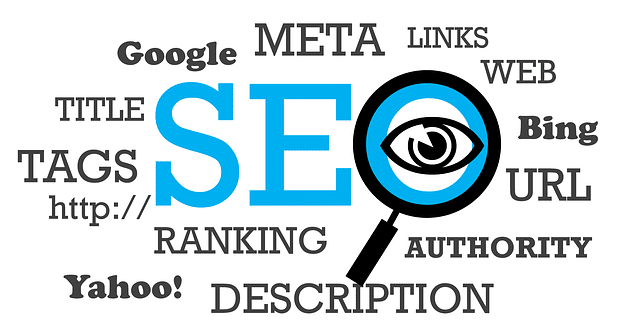
Search engines like Google, Yahoo and Bing love Websites that provide them with fresh content to index. Maintaining a blog allows you to churn out content that adds value to your consumers’ lives and also rank higher on targeted keywords. It’s like killing two birds with one stone.
2. Build Credibility

Providing audiences with new information, not just about your products, but about trends in your industry, allows you to secure an edge over your competitors – it enhances your credibility and establishes your business as a thought leader. Not just consumers, even media outlets and other stakeholders will trust your brand more.
3. Subtle Advertising
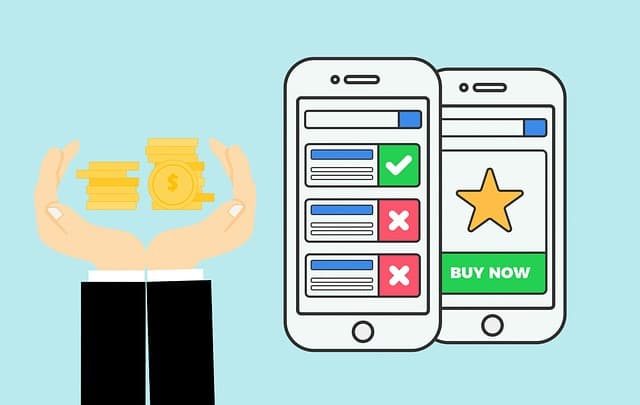
No one likes a brand that shoves products and services down a consumer’s throat. Instead, use your blog to smartly and subtly to lead your audience to a desirable action-step, gradually. For example, if you’re a brand that sells men’s t-shirts, you can post a blog about 5 hottest men’s fashion trends of the year and promote your own product images / links within the story.
4. Develop A Strong Community

Attracting a loyal consumer base is every brand’s dream. Blogging presents customers with an opportunity to engage with your brand and with one another, too. Furthermore, if your content is truly meaningful (which it SHOULD be), you might be surprised with how many people share your articles on their social media handles, offering free word-of-mout
h. In a nutshell, blogging allows you to strengthen your relationship with existing consumers and also attract new ones in the process.
5. Tap Into Influencer Marketing

If you maintain an active blog, you can appeal to influencers hrough listicle format posts that snapshot various thought leaders whom you want to tie-up with. For example, if you are a restaurant, a listicle about Top Food Instagrammers or Top Food Bloggers might just earn you a reshare from some of the people you profile.
6. Understand Your Audience

Blogging allows you to understand your consumers effectively – by monitoring which blog posts are performing best, you can find out what their wants and needs really are. Accordingly, you can tweak your messaging to control the narrative properly and feed them relevant content they wish to see, so your brand resonates with audiences even further.
7. Coveted Subscribers List

Blogging also presents you with an opportunity to build a database of consumers who are genuinely interested in your products and services – often times, if people love your blog’s content, they will subscribe for more updates, which then provides you with a golden chance to cross-promote your business even further through other touch-points.
We hope these seven reasons inspire you to either breathe life into your pre-existing blog or to add one to your corporate Website pronto! If you need any help with content creation, contact our team right here.
Sources-
> www.cbo.me/blog/5-powerful-benefits-of-blogging-for-your-small-business
> www.prismglobalmarketing.com/blog/7-reasons-why-blogging-is-important-to-your-business
> https://socialmediaweek.org/blog/2018/01/brand-needs-blog/
> https://blog.hubspot.com/marketing/the-benefits-of-business-blogging-ht -
Jul 22 2019 5 Reasons Why You Should Work With An External SEO Team
It is interesting to note that Google has already captured a whopping 90.1% of the total search engine market share. Yet, surprisingly, only 44% of companies are leveraging the power of search engine optimization (SEO) for marketing purposes. Lack of SEO compliance has a direct impact on your company’s marketing strategies and it adversely affects your online presence. Do you really want your brand to fail to show up in the initial pages of Google search engine results? Nope, didn’t think so! When left to real experts, SEO can greatly improve the influx of traffic to your website. Read on to know 5 reasons why you should work with an external SEO team as opposed to hiring someone in-house.
1. The Third Person Perspective

An external SEO team is an industry exclusive marketing expert. They can observe opportunities from a bird’s eye view and create ideas, which might be unusual for your sector, but can prove to be truly ground-breaking for your long-term marketing agenda.
2. Cost-Effectiveness

By hiring an in-house SEO expert, you will not only be paying for SEO-specific tasks, but also for employee benefits, such as medical insurance and paid time off. However, if you hire an external SEO team, you will be engaging qualified experts on a need-basis system and your expenditure will only comprise of the actual services you avail.
3. New Strategies, NOT Run-Of-The Mill Ideas

When you hire an external SEO team, you hire a group of pros who are up to date with the latest trends and best practices. This helps create fresh and customized ideas that are relevant, which will fully resonate with any dynamic market scenario.
4. Real-Time Results

Positive SEO results not only need a lot of hard work, it demands consistency. Deploying a sub-standard ‘expert’ for one-time, half-baked efforts will not only throw your money down the drain, but it might even jeopardize your brand’s image if your competitors are already ahead of the game. An external SEO team can maximize your ROI with targeted solutions and also offer you the leeway of getting extra visitors without spending extraneous resources.
5. Scalable Services As Per Your Needs

SEO requirements are susceptible to change, based on new developments within the market, modifications to complex algorithms and/or customer demand. If your SEO need is limited during a certain month, an in-house team will still charge you the same salary (they are on your payroll, remember?). However, an external SEO team can scale up and down as per your needs – this is a crucial point because if your brand suddenly grows, or there are several new competitors in your industry, an external SEO team can easily rope in extra professionals during those high-volume periods.
Clearly, outsourcing your SEO needs to an external team can help you grow your brand via unique strategies, cost-efficiency and scalability. Furthermore, you get to sit back and enjoy the benefit of fast, real-time results. If you want to understand how you can leverage the power of SEO, don’t hesitate to get in touch with our team right here.
Sources –
> https://junto.digital/blog/seo-stats/
> http://www.digitalmediaghost.com/publication/5-important-reasons-why-you-should-always-hire-an-external-seo-expert
> https://moz.com/ugc/5-reasons-why-you-should-outsource-your-search-marketing-efforts
> www.wsiprovenresults.com/blog/8-ways-your-business-can-benefit-from-seo-outsourcing/
> https://thriveagency.com/news/heres-why-only-44-percent-of-businesses-are-investing-in-seo/
-
Jul 19 2019 Up Your Content Game With These 5 Video Marketing Tools
Videos are probably the most sought after form of content that is available in today’s digital era. As per a HubSpot report, 54% of consumers want their favorite brands to share more video content. Forbes reveals that users actually spend 88% more time on Websites with video content, and 95% people remember a call-to-action better after watching a video compared to reading it in text format (10%). Hence, according to Wyzowl, 87% of marketing professionals are already using videos as a marketing tool. Research by Animoto indicates, 88% of video marketers are happy with ROI.
This information highlights how powerful video content can be for businesses across all industry sectors. If you’re looking for video marketing tools to improve your content mix, here are 5 that will prove handy! –
1. Wirecast

For those who are invested in streaming live videos to remote audiences, Wirecast is the go-to video creation tool. It is equipped with a plethora of handy features that allow you to capture live videos – guest lectures, weddings, news events – and you can include dynamic effects like the transitions and animated titles. Regardless of whether you have a Mac or Windows computer, Wirecast transforms it into a studio, and you can live-stream unique content on social media platforms like Facebook.
2. Magisto

The AI buzz is all around, and Magisto is embracing it to perfection. A completely automated video editing tool, it relies on advanced artificial intelligence algorithms to select the best parts of the recorded video and join them together to make a phenomenal final piece.
The value-added features by Magisto are the best things to look out for. While the tool allows you to take videos or click images from within the app, you can also fine-tune it by adding a peppy track of your choice and classy filters that appeal to you.
3. Animoto

An online editor that is fully automated, much like Magisto, Animoto is usually deployed by marketers and vloggers for video creation. Made for those who seek professional and quality videos for their brands, Animoto is a perfect choice since it gives you the option of adding your brand’s logo as a watermark for further visibility when video content is re-shared/retweeted. Animoto also gives you access to a wide array of storyboard templates and options for colors, stocks, fonts, and music that can be easily integrated with the videos. Added bonus – you can even make videos from just photographs and text!
4. Filmora

Simplifying the art of video editing, Filmora is an easy to use, yet highly efficient tool, which allows the user to get creative with new ideas, colors, fonts, brightness, speed, rotation and other advance enhancement features. Make your brand stand out with videos that are truly of professional quality. Filmora is available on Android and iOS, named as FilmoraGo, and it is compatible with both Windows and Mac computers.
5. Wideo

Who doesn’t love animated videos when they’re done tastefully? If you want to one, Wideo is your best friend. With its easy to use interface, you can create interactive marketing videos for your brand either from scratch or through their built-in templates. Wideo has an option that allows you to quickly download video files in MP4 format, and you can directly share your creations on Facebook or YouTube, too.
Video marketing in today’s age is no more a luxury, but an absolute necessity for all those who are looking to grab eyeballs for their brand. We hope you’re able to leverage these five tools to build a brand persona that has a solid impact. If you need help with a video marketing strategy, contact us right here.
Sources –
> www.oberlo.in/blog/video-marketing-statistics
> www.smartinsights.com/digital-marketing-platforms/video-marketing/7-video-content-creation-tools-that-youll-need-in-2019/
> https://shanebarker.com/blog/video-marketing-tools/ -
Jul 17 2019 Check Out These 5 Social Media Campaigns For Inspiration
Social media has a very powerful impact on audiences – it helps them decide which brand to stick to out of a variety of options available in the market. According to experts, 49% of millennials and 85% of Gen Z use social media as a tool to check products to make sure they get their money’s worth. As a result, social media campaigns can be looked at as a kind of digital persuasion subtly played by companies on the minds of buyers – it occupies a dominant part of a buyer’s journey. Some brands have truly mastered this craft with tasteful ideas that are unique. Here are five of our favorite social media campaigns –
Campaign 1 – Starbucks’ Unicorn Frappuccino

As a manufacturing scarcity strategy, Starbucks introduced an addictive purple and pink beverage for a one-week period in April 2017. It had a clean sweep, especially amongst millennials who grabbed the offer just to overcome FOMO and Instagram this pretty brew. The Unicorn Frappuccino and its hashtag generated approximately 1,55,000 Instagram posts. Isn’t that a viral sensation?
Campaign 2 – Charmin’s Sit Or Squat App
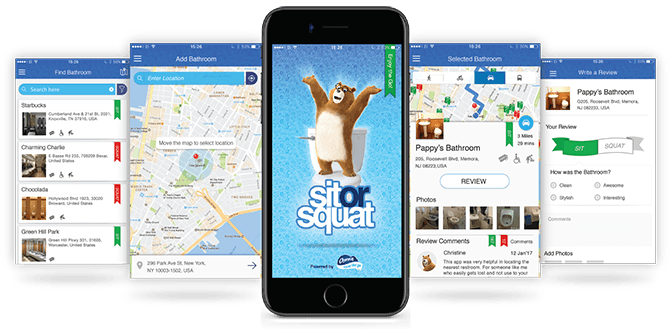
Known for a ton of wit across all of its campaigns, Charmin’s literal toilet seat humor has left consumers in splits for many years. In 2017, they rolled out a rather helpful campaign called Sit Or Squat to help their customers check how clean (sit) / unclean (squat) local toilets are. This interactive campaign addressed an actual issue consumers face – dirty toilets – which drew a lot of attention and appreciation.
Campaign 3 – IHOP:IHOB

A rather odd social media campaign, The International House Of Pancakes switched its “P” with a “B” and became IHOb – the International House Of Burgers – for short span of time in 2008. They acted craftily and asked their audience to guess what “B” stood for. 330,000 users wrecked their minds and responded with wild guesses. Finally, when the ice was broken and the new name was revealed by the company, their tweet drew 15,000 retweets, not to mention that burger sales quadrupled!
Campaign 4 – Dove’s #RealBeauty
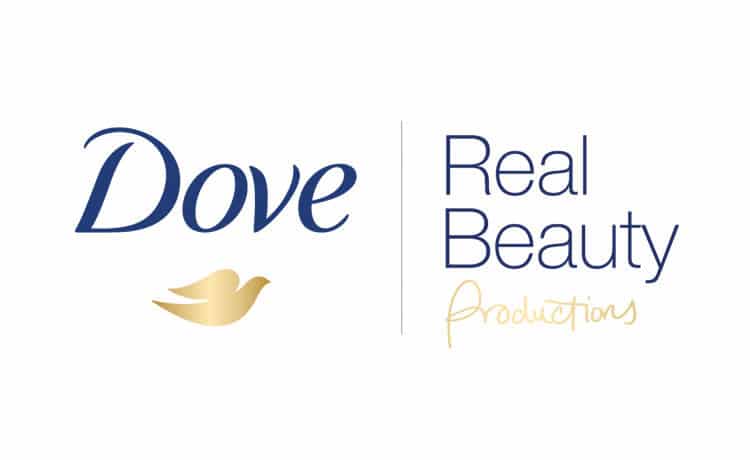
Dove carefully created a holistic social media campaign that tapped into Facebook, Twitter, Instagram and YouTube to emphasize self-love and self-esteem, which has a strong and positive emotional connect amongst its female user-base that anyhow felt underrepresented in advertising that features retouched images of unnatural “beauty” standards. Hashtag campaigns, including #RealBeauty, #NoLiesNeeded, and #SpeakBeautiful, encouraged users to trust and nourish their inner beauty. Additionally, Dove vowed to stop retouching images. AdAge judges unanimously named this campaign as one of the Top 100 21st century campaigns – quite impressive!
Campaign 5 – H&M’s Nano-Influencer Tie-Ups

H&M is definitely a fashion brand that has expanded to many corners of the globe. While most brands leverage influencers and micro-influencers, H&M tied up with NANO-influencers in 2018 to drive consumer engagement substantially. In fact, they gained 294.1 engagements per mention through this tactic, which is amazing in an ultra competitive market.
Social media campaigning can create an enormous shift in both your business as well as your user base’s mindset. We hope these five super successful campaigns inspire you to take the plunge into planning an offbeat social media campaign, too. If you need help, don’t hesitate to get in touch with our team right here.
Sources –
> https://coschedule.com/blog/social-media-campaign-examples/
> https://blog.hootsuite.com/social-media-campaign-strategy/
> www.talkwalker.com/blog/best-social-media-campaigns
> www.brafton.com/blog/social-media/3-brands-with-the-best-social-media-campaigns-in-2016/ -
Jul 15 2019 Don’t Miss These 5 Tips For Improved Social Media Analytics
If you have clear goals for your brand’s social media, it is important to measure campaign success – we call this process social media analytics. One of the best ways to conduct social media analytics in an organized manner is through an Excel spreadsheet – it will enable you to share your findings with your team easily, make real-time edits and convert data into graphs and bar charts quickly. So, what are we waiting for? Let’s take a look at 5 top notch tips to help you assess your social media analytics better! –
Tip 1 – Know Which Social Media Metrics to Measure

In order to measure social media campaign success, you first need to determine which numbers are important to scrutinize – Sales? Site visits? Downloads? Comments? Likes? Tags? DMs? Referrals? UGC? What numbers reflect success? What numbers are average? What numbers are a major red flat? Statistics reveal that conversion rates and engagement are the top 2 metrics to consider, with the former being at 36% and the latter at 35%.
Tip 2 – Identify Changes in Audience Behaviour by Examining Follower Growth

The best way to engage several potential customers and increase traffic is by having a good number of real social media followers. Input the follower count per platform into your Excel sheet so you can track growth every month.
Pro Tip – Cyfe is a popular social media dashboard tool, which helps track and monitor social media data to measure success of various social activities.
Tip 3 – Monitor Brand Engagement Closely

Your followers and impressions are only of use if you get enough engagement out of it. Comments, re-pins and retweets affirm the fact that the content you are sharing is of interest to your followers. Input the number of posts per month by category (i.e. video, contest, JPG, testimonial, blog link, infographic, etc.) and the total number of comments / likes / shares / DMs. Doing so will allow you to find out what sort of content is drawing the best engagement amongst your follower base, so you can plan better editorial content.
Pro Tip – Consider also tracking your competition’s social media performance side-by-side, too, so you know where you really stand in comparison.
Tip 4 – Spot Reach-Related Irregularities by Looking at Impressions

The number of individuals who see your social media updates regularly is collectively known as impressions. Top social networks have such built-in analytics. Record all the impressions in your spreadsheet at set intervals, and also keep a note of each period’s posting frequency. Look for spikes and try to identify what caused it to occur.
Tip 5 – Review Traffic and Clicks Closely
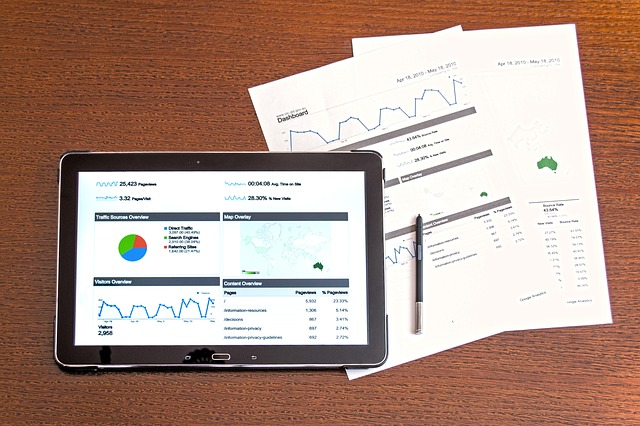
Since clicks influence Web traffic immensely (and, sales, if you’re an e-commerce portal), it is an important metric to observe. Not all clicks result in traffic; but if there is a massive difference between them, it clearly indicates that something is wrong with your site – most probably the loading time. Note the referred traffic on each of your social networks on the excel spreadsheet for better analysis of platforms that are performing well and platforms that aren’t adding any value.
It is also important to pay attention to the sort of audience profile you’re drawing – if your ideal customer base is women between the ages of 30-40, and your analytics reflects traffic of men between the ages of 50-60, clearly there is an issue that needs to be addressed.
We hope these five pointers helps you analyse your social media performance more thoroughly so you can improve future campaigns, accordingly! Make sure you input all the data above accurately. And, if you need any expert help with social media strategy, auditing and analytics, feel free to contact our team right here.
Sources –
> www.socialmediaexaminer.com/10-metrics-to-track-analyzing-social-media-marketing/
> https://blog.hootsuite.com/social-media-analytics/
> www.socialmediaexaminer.com/5-ways-to-analyze-social-media-marketing-performance/
> https://themanifest.com/social-media/how-track-and-understand-social-media-analytics





